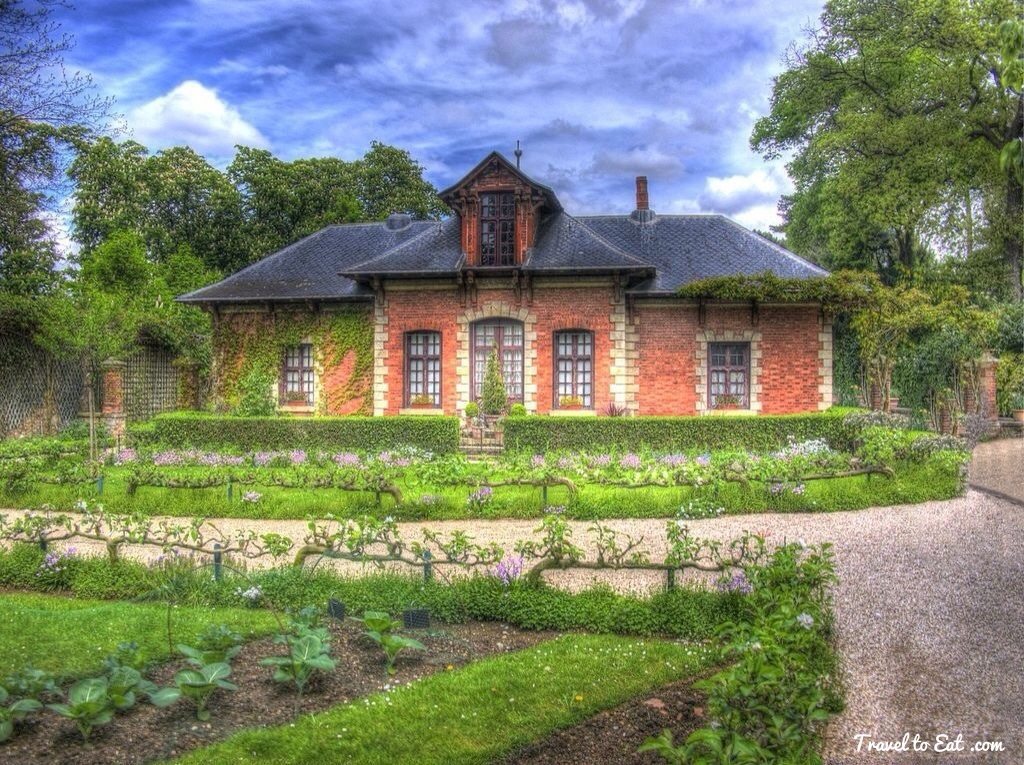
I am breaking this post on Bagatelle into smaller pieces, this is the second part on the gardener's house, seen above. As I said in the previous post, the Count d'Artois, Louis XVI's younger brother, and thus Marie-Antoinette's brother-in-law, had bought a house, in very bad condition, existing on this site. Marie-Antoinette, amused by the poor condition of the place when she visited it for the first time, said to her brother-in-law that she hoped to be accommodated there two months later. Artois took up the challenge, and it is said that he bet 100,000 pounds with the Queen. Artois won his bet, two days later the architect Bélanger had drawn the plans of the folie, and nine hundred workmen leveled the buildings and prepared the ground. By November of 1777 the house, or as the French call it folie, was completed. The name Bagatelle comes from the Italian bagattella, means a trifle, or little decorative nothing. In 1777 a party was thrown in the recently completed house in honor of Louis XVI and the Queen.

After lunch we meandered to these two lovely gardens on each side of the Gardener's House. Just to give you an idea of how the gardens are laid out, I have made this very rudimentary map. Keep in mind the place is huge, about 25 acres, mostly in natural condition, perfect for a quiet day of natural beauty if you don't mind the calls of the peacocks.

After the house was done, the well known Scottish gardener Thomas Blaikie was asked to create the garden. Instead of what had been done for the house, the garden was not carried out quickly. The formal garden spaces surrounding the château were expanded with a park to the side in the naturalistic English landscape style and dotted with sham ruins, an obelisk, a pagoda, primitive hermits' huts and grottoes. It was not until 1784 that the gardens were completed. During the revolution the estate was confiscated but intended for the public entertainment instead of being sold. Napoleon had his son live there for a short while until it reverted back to the Bourbons.

The second major step of the history of Bagatelle was the purchase in 1835 by Lord Seymour, marchion of Hertford, to settle there as his Parisian residence. He built the “Trianon” for his son Richard Wallace. He also increased and arranged the garden, which grew up from 14 to 24 hectares. He was a close friend of Napoleon III and he regularly hosted the empress Eugénie.


She attended the lessons of horsemanship of her son, the young Imperial Prince, seated in the kiosk “of Impératrice”. As you can see in the top picture, the famous rose garden is to the right, but not yet in bloom. I will come back later to show you when it is in season. After Hertford's death, Sir Richard Wallace (of Wallace Fountains fame, see my post) settled in the grounds until his death in 1890. His wife inherited the estate, and she bequeathed it to her secretary Murray Scott. At the beginning of the 20th century, there was a plan to parcel out the estate. To avoid the dismemberment, the City of Paris blocked the operation and purchased the whole estate in 1905.

Jean-Claude Nicolas Forestier, at the head of the gardens of the City of Paris, had been the instigator of the purchase of Bagatelle. The Bagatelle gardens are the site of the annual Concours International de Roses Nouvelles de Bagatelle, an international competition for new roses held by the City of Paris in June of each year. Forestier also replanted the remainder of the park. He created the pond of the water lilies, that he arranged as a tribute to Monet (I called it the Swan Pond on my map). I love this Gardener's House, bordered on the side by the rest of the park, Forestier got to live in it, I don't know about later tenants, no one lives there now. To me, this would be a perfect house and location to live out the rest of my days, a fairy tale house surrounded by formal gardens and a huge park on the side.
References:
Paris a Fabriques: http://www.parcsafabriques.org/bagatel/bagatel1e.htm
Wallace Fountains: /wallace-fountains-paris/

